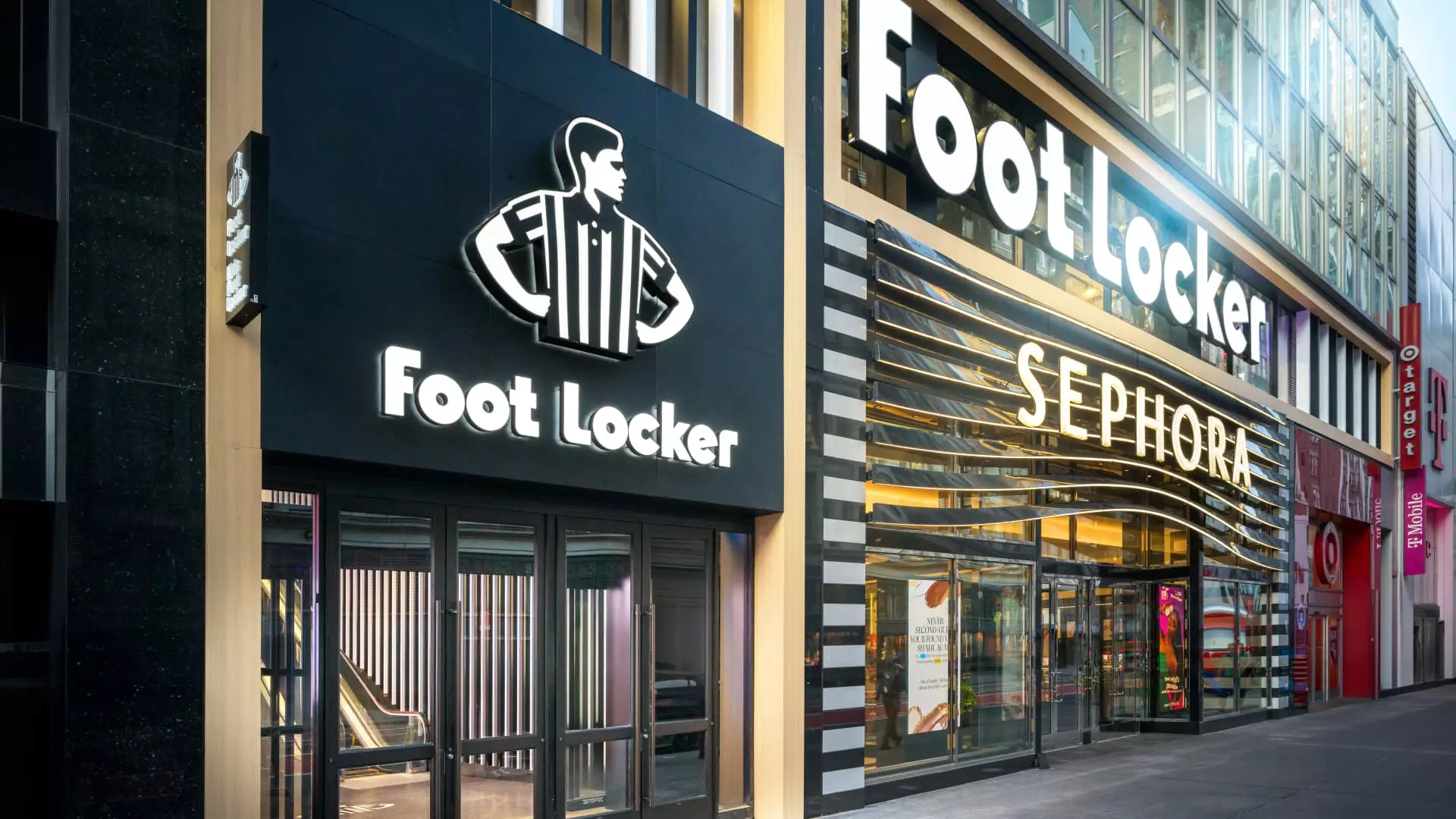Foot Locker’s recent quarterly report has sent ripples through the retail landscape, revealing significant challenges that not only affect the sneaker retailer but may also signal broader issues for its key partner, Nike. In their latest earnings announcement, Foot Locker revised its full-year guidance downwards, highlighting a troubling trend of softening consumer demand and heightened promotional activity that have impacted sales figures. The results were stark: Foot Locker reported a net loss of $33 million, far from the anticipated profit, leading to a sharp 15% drop in their stock during premarket trading.
The retail industry, particularly the footwear sector, has been experiencing notable volatility. Foot Locker’s inability to meet Wall Street expectations in terms of earnings per share and revenue raises concerns about the overall health of consumer spending. The company reported adjusted earnings of only 33 cents per share, compared to an expected 41 cents, while revenue fell short at $1.96 billion versus predictions of $2.01 billion. Such misses inspire skepticism among investors and analysts regarding the company’s market strategies and future viability.
One critical aspect addressed by Foot Locker’s CEO, Mary Dillon, was the erratic nature of consumer behavior evident over the past quarter. Shoppers are showing up for key shopping events—like back-to-school sales and holiday promotions—but tend to pull back in non-peak periods, resulting in more pronounced fluctuations in sales activity. This trend of “peaks and valleys” in retail can create a challenging environment for companies trying to maintain steady revenue streams.
Moreover, Dillon’s commentary on the “softness” observed with Nike products casts a long shadow over Foot Locker’s future. With Nike accounting for approximately 60% of Foot Locker’s sales, any downturn in Nike’s performance inevitably impacts Foot Locker’s results. Recent adjustments at Nike, particularly with new leadership under CEO Elliott Hill, could signal a potential realignment in strategy that, while promising in the long run, may not provide immediate relief for Foot Locker during the crucial holiday sales season.
The current marketplace at Foot Locker is characterized by an increase in promotional activity across the board, which Dillon acknowledged as being higher than initially forecasted. This “elevated promotional level” indicates that retailers are leaning heavily on discounts to attract hesitant consumers. As consumers become increasingly cautious with their spending, the reliance on promotions could erode profit margins, drawing attention to the fragile economic climate faced by both retailers and brands like Nike.
Foot Locker’s downbeat holiday forecast anticipated sales declines ranging from 1.5% to 3.5%, starkly contrasting with previous estimates which predicted modest growth. This adjustment reflects a more cautious outlook as the retailer grapples with reduced consumer enthusiasm and a changing landscape wherein predictions made earlier may no longer hold true. Analysts had similarly expected a more muted outcome, highlighting the disconnect between past performance benchmarks and current market realities.
Despite the concerning figures and adjusted guidance, not all indications during the quarter were negative. Foot Locker did manage to report a slight increase in comparable sales of 2.4%, albeit below the 3.2% that analysts had anticipated. This suggests there are areas of strength and potential growth within Foot Locker’s offerings, providing a glimmer of hope amid overall market challenges. Particularly noteworthy was the positive turnaround for certain lines, including Champs and WSS, which both reported growth figures.
The retailer’s plans for revitalizing physical locations also pose a long-term strategic move designed to enhance the shopping experience and attract a more extensive customer base. Dillon emphasized that while the current landscape presents challenges, Foot Locker is committed to using its financial resources to refurbish stores and integrate new strategies. This approach posits a more optimistic angle, suggesting a longer-term recovery plan that may eventually stabilize the company’s future and bolster its competitive position against competitors.
Foot Locker’s recent challenges underscore a broader narrative within the retail industry, where consumer behavior is increasingly unpredictable, and market conditions may necessitate a reevaluation of strategies. The implications for Foot Locker, particularly concerning its relationship with Nike, cannot be overstated. As both companies navigate the current economic climate, their ability to adapt and innovate will be crucial in determining their respective futures. Investors and analysts alike will closely monitor the next set of quarterly results, particularly as Nike prepares to unveil its latest strategies ahead of year-end reports.

